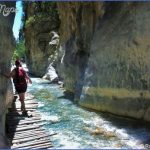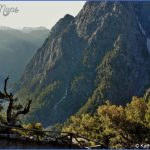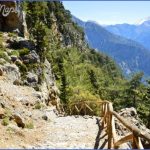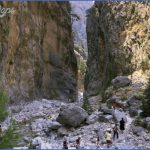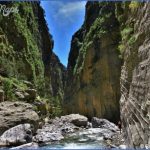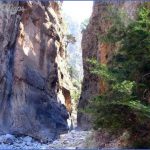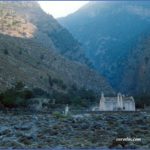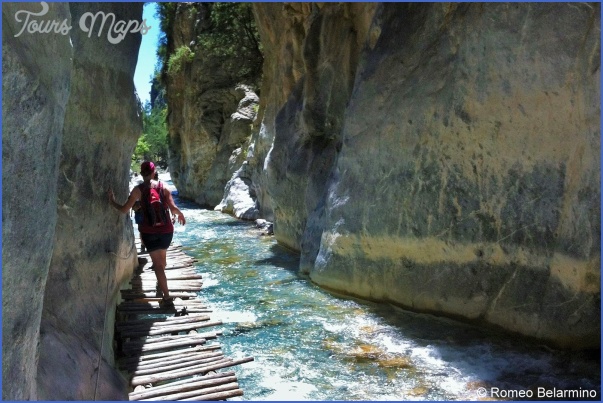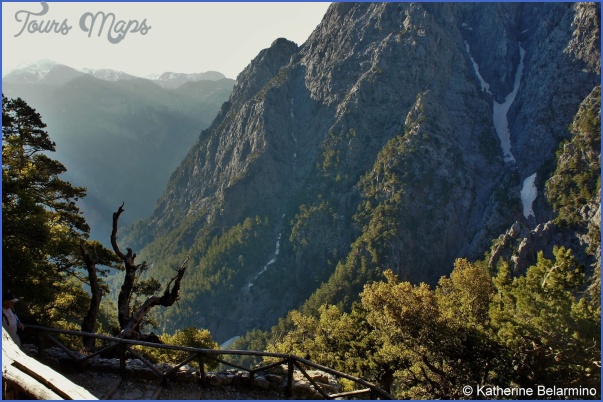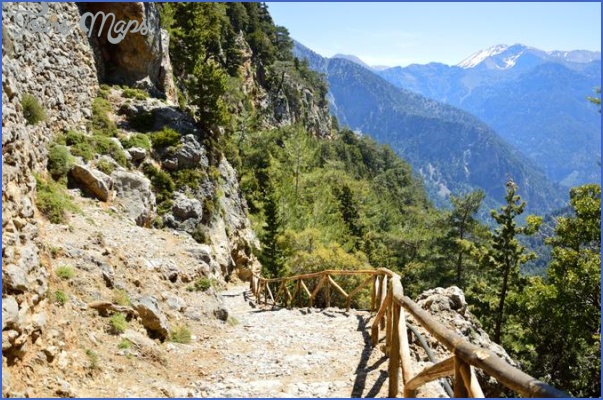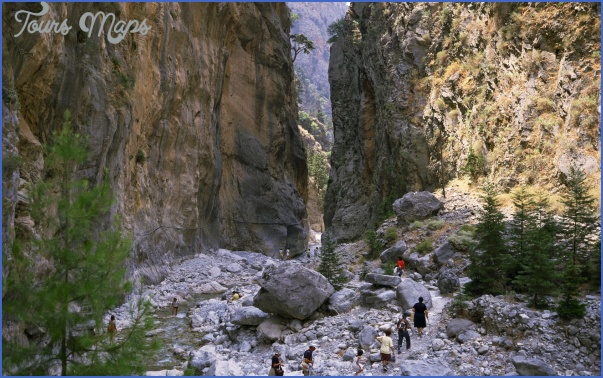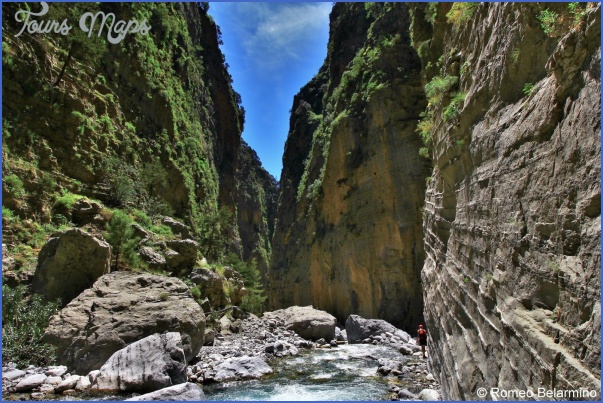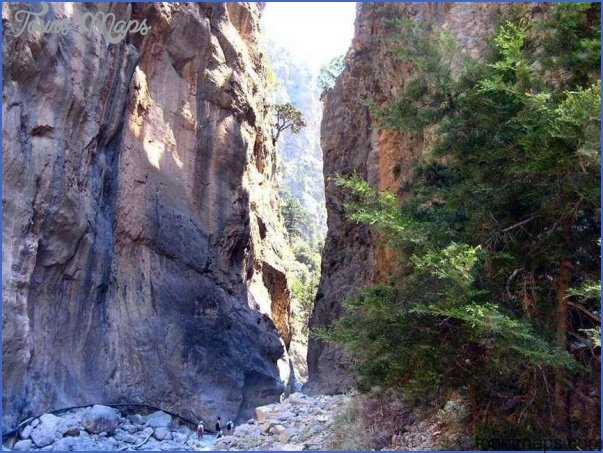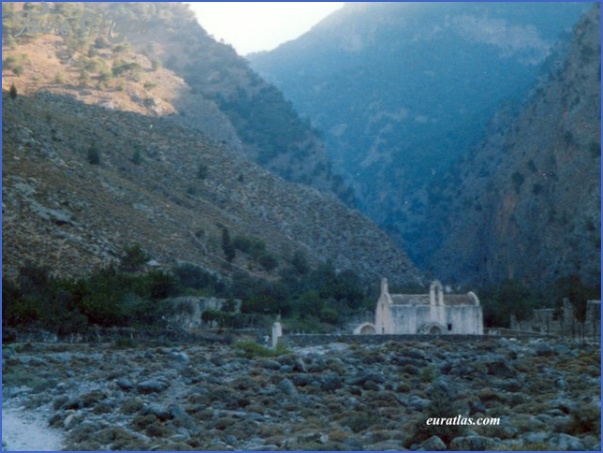It was when we turned to walk in a different direction that I noticed the bird ‘tour group’. Perhaps 100-200 birds or more, standing several deep near the water’s edge, huddled closely together. Presumably they had finished feeding, gorged maybe on a plethora of frogs and toads. Line-ups of Great White Egrets and smaller Little Egrets, rather angelic in appearance in their snow-white suits like choir boys on parade. Stately Greater Flamingos and their pinker Lesser Flamingo cousins. Some smaller, black-headed – and black beaked – African Sacred Ibises. There were taller, darker herons; Black-headed Herons maybe and a few giants of the heron tribe, head and shoulders above the rest, resplendent with their long chestnut necks. These were the aptly named Goliath Herons, not abundant birds here. But the stars of this avian lineup was a phalanx of Great White Pelicans, standing inshore I presume after a successful morning’s fishing out on Lake Lucia. With their huge beaks and beak pouches, each looked self-satisfied and avuncular, rather like the conductor of a famous orchestra concentrating on the score before lifting the baton to start a well-known symphony.
It was one of those very special moments.
They counted us in at the top and out again at the bottom to make sure that there were no casualties along the way or anyone left in there overnight. A ragged line of us; French, Greeks, Americans and Brits – maybe other nationalities too – all with characteristic puffy, red faces, hot and bothered, some extra exhausted by the searing heat of the last mile or so to Aghia Roumeli. In midsummer, walking the 20 km of the Samaria Gorge in the west of Crete, Europe’s largest river gorge, is not just a test of stamina. It’s a test of adequate footwear.
The Samaria Gorge Photo Gallery
Trainers appeared to be de rigueur. Whether they are appropriate for a hard, albeit mainly downhill, walk on rough gravel and stone with occasional small boulders, depends, I suppose, on their quality. Gloating as my daughter and I were – me in my lightweight walking boots, she in walking shoes – at the number of walkers limping uncomfortably in their trainers, the gorge proved almost as amazing for its fabulous scenery as it did for inducing people to walk in the most impractical footwear. Canvas shoes, slingbacks, even believe it or not – one pair of beach flip-flops.
Eschewing the organised coach party trips to what has become, in the last few decades, a honey pot for tourists, we did Samaria the tough way. All public transport and delays. It would sound better, I thought, for the feature I would later write about our walk in The Independent’s Travel pages. After an Olympic-paced few kilometre walk, pre-dawn, from our hotel to Hania’s bus station, we caught the first service to the top of the Gorge at 6.15 a.m. Hot, we dozed as it climbed up to the Omalos plateau set high in the Levka Ori (White Mountains), their limestone peaks rising to 2,000 m around us. An hour or so later, after a pastry and coffee in the large, neat cafeteria above the top of the Gorge, we were ready for the off.
Dawn had broken and temperatures were distinctly cool even though it was August. We paid our national park entrance fee and scanned the sunlit peaks before looking down into the pine-forested depths of the chasm below. There followed a 3,000-foot descent on an excellent hairpin path, this way and that in the dappled shade of Cretan Cypresses, pines, and the occasional Wild Fig, Almond or Cretan Maple tree. Anyone believing that this is the easy bit of the walk should contemplate that the descent is the height of Snowdon and that downhill walking takes its toll on knee joints and pelvis alike.
The analogy with Snowdon doesn’t end there either. Samaria attracts hordes of people (over 300,000 a year) so we had little hope of sitting by a tranquil stream in an atmosphere of peace and serenity. Far from it. We spent the five hours the walk took us overtaking a steady stream of walkers (and limpers), many of them far from quiet and including one Greek man singing all the way. Minus bouzouki. Minus a decent voice come to that.
Along the route there are well signposted springs (apparently 22 of them), seemingly with an abundance of cool water at most of them. We knew this before we set off, but – belt and braces – we carried some water just in case. At the abandoned and isolated village of Samaria about 8 km down the gorge – inhabited by seven families until 1967 when the Samaria Gorge National Park was designated – it’s hard to imagine how these people eked out a living, cut off in the winter months by the turbulent floodwaters which thunder down the gorge and nowadays closing it to walkers at such times.
The emblem of the park – and a major reason for its designation – is something which few people, we were told, now see. The goat-like Kri-kri or Agrimi, probably isn’t native here. Brought to Crete (and probably to much of the rest of Greece) maybe at the time of the Minoan civilisation, it now only survives in these Cretan mountains and on a couple of tiny offshore islands. By 1960, the Kri-kri was under threat, with numbers below 200. It had been the only meat available to mountain guerillas during the German occupation in World War II. There are still only about 2,000 animals on the island and they are considered vulnerable: hunters still kill them (illegally) for their tender meat, grazing grounds have become scarcer and disease has affected them. Hybridisation with ordinary goats is another threat.
The Kri-kri used to be considered a distinct subspecies of wild goat but DNA analysis has since found that it is a feral domestic goat derived from the first stocks of goats domesticated in the Levant and other parts of the Eastern Mediterranean around 8000-7500 bc. So it is not considered truly wild though it is an ancient link to the earliest domestications. I really wanted to see some and the gorge is reputedly a good place to do so.
It wasn’t looking too likely; more people here in the gorge means more disturbance. But, tipped off by a Park ranger, we were keeping a watch for the Kri-kri near Samaria village and, as we approached the few buildings, we spotted four or five nimble females crossing the dried up riverbed. On the edge of the village, where mules used for carrying provisions (and injured walkers) were feeding on some hay, a family group of Kri-kri were vying with them to devour it. More antelope than goat in appearance, altogether we counted about 12 females with their yellow-brown coats and black back stripe and eight khaki brown kids, a few of them no more than 60 cm tall. Another ranger told us that we wouldn’t see the much longer horned males. ‘The boys’ as he described them quaintly, ‘stay high up in the mountains, away from all the people.’
Leaving Samaria village, with Chukar (a mountain partridge) croaking their guttural call on the steep slopes high above, we walked through the most photographed sections of the gorge. Here, with the river disappearing underground, then reappearing again at intervals, the red-brown cliffs rise near-vertically like massive cathedrals reaching to the sky for hundreds of metres. The occasional Wild Fig tree, with its biblical connotations, somehow manages to grasp a foothold in a moist rock cleft. The path crossed the river from one side to the other where the gorge narrows to an incredible 3 m – at the so-called Iron Gates (no gates) – and you are left in awe, wondering at the turmoil of thunderous pounding these rock walls endure when the river is in flood.
Throughout the gorge, we were struck by the lack of litter, even though 2,000-3,000 people walk it on peak days. In spite of this human flow, the paths, by and large, are in good repair, helped, no doubt, by the entrance fee, something British walkers in our National Parks baulk at but which seemed universally accepted here. In fact the place remains very natural, except for the telephone wire on short wooden poles and the plastic water pipe both of which run from Samaria village to the bottom of the gorge. Most of the time we hardly noticed them but where the gorge narrows they can be an intrusion. No doubt they are a necessity for accident communications (heart attacks and broken limbs are apparently the most frequent) and for summer firefighting.
In midsummer when we walked it, birds like the impressive Lammergeier (Bearded Vulture) are hard to find but we did watch little Crag Martins riding delicately the updraughts of breeze alongside us as we neared the bottom of the gorge. Spotting birds of prey overhead – there are huge Griffon Vultures here too – is certain to be difficult; after all, the gorge is so narrow and its sides so high that there’s not much overhead sky visible. That can be a blessing too. In midsummer, walking here would be extremely arduous if the sun penetrated these depths. We were hot and tired enough as it was.
For the botanist, the Samaria Gorge is a bit like paradise. With 400-500 different plant species, they range from a yellow-flowered flax and blue-flowering Cretan Rock Lettuce to cyclamens and bushes of the rare White Peony, the last one growing in profusion around the tiny, ruined church of Aghios Nikolaos, a few kilometres into our walk.
Quite suddenly, after the gorge constricts into its narrowest part, the valley broadens and we walked out of the national park at the ruins of what was the original Aghia Roumeli village, now a set of shaded drink stands and little tavernas. We couldn’t walk past them without succumbing to a cool, freshly squeezed orange juice. It tasted heavenly. But the walk wasn’t over. Not yet. The next part – about 4 km, albeit of flat walking – proved to be the hardest part. We were out in the full glare of the afternoon sun (we hit it early afternoon at 90°F in the shade) and it was an arduous trudge to the new Aghia Roumeli village, built by the sea where the inevitable knick-knack shops prevail. Then it was a case of waiting for the next ferry to Hora Sfakion, an hour’s sailing time east along the coast – Aghia Roumeli has no road connections – followed by a service bus back to Hania. Falling asleep later in the bus was hard to avoid but the warm breeze on the ferry ride kept us awake. And as we sailed along the south coast of Crete I spotted a couple of Kri-kri grazing on the parched slopes of a rocky headland high above. One of them had horns; it was ‘a boy’ all right.
Later that week we tried a quieter gorge, one of about forty on Crete; it was a much easier walk too. The 8-km-long Imbros Gorge, well signposted from Imbros village around 24 km east of Samaria in the foothills of the White Mountains proved a far easier walk compared to the rigours of Samaria. We set off in an invigoratingly cool breeze wafting a heady aroma of Sage, Rosemary and other herbs. But it wasn’t exactly tranquil. During the morning we got overtaken by pulses of German tourists, each pulse seemingly the contents of a coach tour. For some inexplicable reason we heard no other language. Come noon, all these groups had marched on and we suddenly had the gorge to ourselves. Here, we could sit and listen to silence, broken only by the breeze rustling some cypress or wild olive trees and an occasional mewing call from a couple of huge, young Bonelli’s Eagles on the crest of the cliffs high above. It was hard to imagine a more romantic place on earth.
Half way down its rather genteel slopes, there was a small, stone-built Venetian water reservoir where a few people from Imbros village sell drinks and keep a donkey in case anyone has to be carried out. I presume the donkey does little business but who knows. Further on, the gorge narrows impressively and massive cliffs rise on either side, sometimes for 100 m or more. What is different from Samaria, apart from the smaller scale, is that Imbros only has water running down it after snow melt in spring. The rest of the year it is possible to walk it without fear of flash floods. At its end, where the steep sides fall away, a few tavernas by the main road from Hora Sfakion to Vrises (and on to Hania or Rethimnion) compete for your custom. To get back to Imbros village from here demands either a sauna-like walk up interminable hairpins on a public road climbing several hundred metres, a long wait for the infrequent public buses, or what was effectively a rip-off taxi fare. I tried bartering but the taxi drivers here are obviously wily enough to know from your knackered looks that a taxi at any price is a welcome relief.
Gorges are attractive places; they certainly attract me. I suppose it’s because you can be pretty sure that their relative inaccessibility – steep sides, rocks and cliffs, stream liable to sudden spates of floodwater – has preserved much of what has always been there in terms of their vegetation and associated wildlife. Modern agriculture, thank heavens, can’t get any purchase; grazing livestock are at least a little limited in where they can get to; and commercial foresters have limited scope for planting lines of trees that will be difficult and costly to harvest.
In complete contrast to the large scale and fame of the Samaria Gorge, a far, far smaller one marked on more detailed maps of western Cyprus intrigued me at a later date on holiday there. I decided to walk into it. The path to reach it was through a plantation of orange and grapefruit trees; pretty colours of course but it was the citrus aroma that was simply overwhelming. Combined with the incessant, bubbly songs of Olivaceous Warblers and the harsh chatters of black and grey Sardinian Warblers skulking in the glossed green leafy growth – we caught only glimpses of both though in reality, the Olivaceous’s song is far more attractive than its rather dull brown appearance – this was a heady, and naturally slow start to a walk in a gorge.
Into the narrow cleft and we lost the warming sun; the citrus aroma was exchanged for the heavier scent of herbs: thyme, maybe Rosemary and Sage too. The cool, damp air hung like a veil above the turbulent little stream, the towering rock walls on each side sandpaper-smoothed over millennia by its waters. Fig tree roots dangled from high above like the tentacles of some giant octopus and dripped water on to vivid green maidenhair ferns eking a life from some narrow clefts in the shaded, greying limestone. After this, the path slowly became narrower and rockier. Burnished white limestone cliffs on either side closed in. Phoenician Junipers with their dark red berries left space for the occasional wild olive, leathery, long-leaved Oleander trees and a few Lentiscs with their fresh-looking leaves and bark with pungent resin (used to make mastic). On the stony ground, little yellow trumpets of Oxalis flowers were competing for attention with the paper-thin flowers of Crown Anemones, dazzling white with black-as-coal centres. The Avakus Gorge was turning out trumps; to say that it was a beautiful, tranquil spot underrates it.
But after 3 or 4 km of walking along the gorge, it was proving impossible to scramble further. The clear-running stream, confined by the sheer cliffs closing in on both sides, was too deep and its waters too cold. And there was no way on without wading through cold, thigh-high water. I would have liked to have gone further but turned back reluctantly … though there was the allure of the citrus grove on the return walk. And there were some ripe oranges on the ground just begging to be eaten. What a taste. Nearby in some heathy vegetation below the gorge where the Avakus stream turned towards the sea, Cyprus Warblers – found nowhere else in the world – black-headed on bush tops, vibrated with their powerful chattering songs like operatic divas at La Scala. And swallows did low-level strafing sorties over the bushes to catch airborne insects.
There are two Cypruses. Not the obvious Greek and Turkish sectors; rather the developed Cyprus frequented by most package holidays and – as yet, anyway – the undeveloped, off-the-beaten-track Cyprus. So here you have a choice. You can roast on a much contested square metre of sand at body-clogged Coral Bay. You can disco the night away in Agia Napa. And you can risk being mowed down by one of the numerous tourist coaches in Troodos, not a village but a line of tacky shops and ugly fast-food tavernas high up in the mountains. Or you can explore ‘alternative’ Cyprus. The Cyprus which hides away little places such as the Avakas Gorge and barely signposts its existence. Long may it be that way.
There are other gorges, too, that I have barely explored; the Nestos Gorge on the northern Greek mainland is carved out along the meandering course of the Nestos River then floods its way south from Bulgaria and out to the Aegean Sea near Thasos island. There is a small railway that runs the length of it but I walked a couple of kilometres or so (my time was unfortunately limited) from the bottom end on the footpath cut into its eastern side. At this lower end it’s a wide river valley, part wooded but with steep, sometimes vertical cliffs. The occasional bubbling sound of European Bee-eaters drifted on the breeze but never drowned out the incessant fluting whistles always reminiscent of the tropics to me – of Golden Orioles hiding in the trees near the side of the river. On the rocky slopes above were Blue Rock Thrushes, from where I heard a curious chacking noise similar to the alarm call of a Common Blackbird. Try as I might I couldn’t find its source; it was later, having returned to Kavala for the night, that I realised that these were the rattling calls of Rock Partridges, shy doyens of very rocky ground in these parts. I wish I’d had more time in the Nestos Gorge; I’m sure that there was a lot more to see there, flowering plants included, but time didn’t allow. One day I intend to go back and walk its whole length.
The gorges I have spent more time in – not surprisingly because they are in my home country, Wales – are the wooded river gorges of Snowdonia, some of the best places in Europe for mosses, ferns, lichens and liverworts. With around 200 days of rain per year, these plants that require moist conditions are in verdant heaven; in recent years these oak-wooded gorges have been described as our very own rainforests, albeit temperate rather than tropical ones. I think it’s a fitting description. My favourite is in Ceunant Cynfal below the village of Ffestiniog in Snowdonia; it’s reckoned to be one of the finest wooded river gorges in Britain.
In places the Cynfal stream (it’s hardly a river) has carved a ravine up to 40 m deep providing an often sheer series of cliffs with ledges clothed in mosses and liverworts. A few flowering plants like Golden Saxifrage – a water lover – with their little mats of gold-green flowers add a splash of colour amongst the verdant greenery while the grey-green, hairy-leaved Wood Sage adds a faint fragrance to the damp air. Walking along the gorge, it’s the noise of the waterfalls – a series of cataracts that gush and tumble over sandpapered boulders – that dominates. It’s not always easy to pick out the mew of a Buzzard overhead or the metallic, shivering trills of tiny Wood Warblers visiting for the summer to breed amongst the gnarled oaks. They are joined by other migrants typical of these upland oakwoods; flashy-coloured Redstarts and elegant black and white Pied Flycatchers, both of which seek out tree holes to lay their eggs. But it’s the profusion of non-flowering plants, the cushions of mosses, liverworts, the lichens on boulders and tree trunks, and the ferns that dominate this place. And they rely on its humidity. Over 150 different species of moss and liverwort are here. It’s so humid that I always feel that if I stand still for long enough, mosses will start growing on me too.
The trees in Ceunant Cynfal aren’t all Sessile Oaks, though most are; there are some white-barked Birch, Rowan with its bundles of autumn berries, Holly, Ash, Hazel and Wych Elm. Many of the ferns grow in damp, shaded spots between the boulders, on cliff ledges, in the clefts of tree limbs or just in shaded places on open ground; there’s enough splashing from the waterfalls and general humidity to keep them happy. Both British species of tiny Filmy Fern, their fronds no more than a few centimetres long, grow here together with equally uncommon but larger Beech Fern, its lovely bright green fronds a delight to find.
In places the Cynfal stream – on its turbulent way downhill to the Dwyryd River which flows west and out to sea near Portmadog – has cut pillars out of the bedrock. The largest of these, maybe 10 m high, known as ‘Huw Llwyd’s Pulpit’, is named after a well-known local character who was supposed to have been a magician. In the 17th century, Huw Llwyd used to stand on the top of the rock to recite poetry, preach sermons and converse with spirits. He claimed he was safe from evil while up there because the devil was afraid of water. I don’t know about being safe from the devil but every time I look at the pulpit I wonder how on earth he was able to get up its vertical sides or stand on its slightly sloping top as curtains of moisture drift past on the breeze, just the right conditions for slippery algae and liverworts to blossom. And who came to listen to him down here with the thunder roar of the waterfalls just below and the wind sometimes howling madly through the aged, gnarled oaks.
But it’s a good tale nevertheless. And, with myths and magic figuring prominently in Welsh folklore and tradition, what more mystical place to imagine the scene than in this – gorgeous – gorge.
Maybe You Like Them Too
- DUBAI UNITED ARAB EMIRATES
- Anniston Map
- Wildlife Travel Guide
- Wildlife Travel To Alonissos
- National Wildlife Travel

